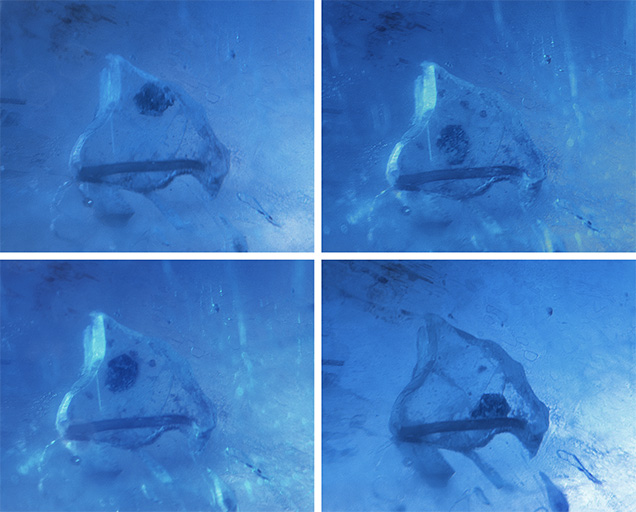A Sapphire with a Negative Crystal Containing a Mobile Graphite Daughter Crystal

Mineral and fluid phases within negative crystals in metamorphic sapphires provide us with general information on the sapphire and the trapped fluid itself. Such inclusions indicate a stone has not been heated when intact negative crystals are observed containing carbon dioxide (e.g., Fall 1986 Lab Notes, pp. 152–155). The author recently had an opportunity to identify a natural star sapphire containing a unique daughter crystal phase within a negative crystal.
This stone, which measured 22.20 × 18.00 × 14.05 mm with an estimated weight of 62 ct, was set in a ring. It displayed a six-rayed asterism due to light reflection from numerous long intersecting needles. Gemological observation and properties confirmed that this stone was a natural sapphire. The presence of unaltered mineral crystals and the chromophore cannibalization pattern around dense clouds of needles indicated the stone had not been heat treated (J.I. Koivula, “Internal diffusion,” Journal of Gemmology, Vol. 20, No. 7/8, 1987, pp. 474–477). Notably, this stone had one large negative crystal containing an opaque hexagonal crystal (see above). The hexagonal daughter crystal was free to move within the negative crystal when the stone was rocked and tilted. Careful infrared spectroscopic measurements suggested that this negative crystal was mainly filled with water and CO2 based on water-related peaks at 3706 and 3605 cm–1 and a large CO2 broad band at 2340 cm–1. However, the opaque daughter crystal was not identified by Raman spectroscopy because the negative crystal containing this daughter phase was located in a deeper section of the stone. Its hexagonal crystal shape and appearance suggested that the mobile hexagonal daughter crystal was graphite, which has been previously documented (E.J. Gübelin and J.I. Koivula, Photoatlas of Inclusions in Gemstones, Vol. 3, Opinio Verlag, Basel, Switzerland, 2008, p. 268). This is the first example of a negative crystal with a mobile solid phase in corundum that the author has encountered.
.jpg)


